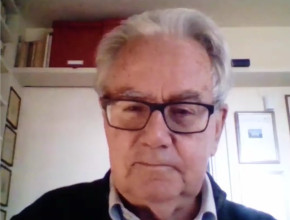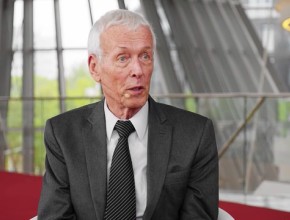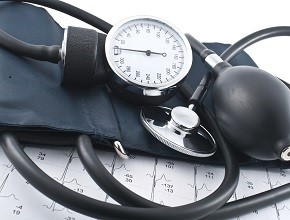Dr Giuseppe Mancia, former president of the International Society of Hypertension and the European Society of Hypertension and editor in chief of the Journal of Hypertension, talks with Dr Roman Jaeschke about the role of patients’ adherence in antihypertensive treatment.
References
Rea F, Cantarutti A, Merlino L, Ungar A, Corrao G, Mancia G. Antihypertensive Treatment in Elderly Frail Patients: Evidence From a Large Italian Database. Hypertension. 2020 Jun 8:HYPERTENSIONAHA12014683. doi: 10.1161/HYPERTENSIONAHA.120.14683. Epub ahead of print. PMID: 32507038.Roman Jaeschke, MD, MSc: Thank you very much for your reflections on the hypertension guidelines [see: Hypertension: Highlights from the 2020 ISH guidelines]. They will make life easier for many physicians and probably better for a lot of patients, we’d hope.
As I mentioned before, I’ve never known a person who published 1000 papers, not to mention 1000 papers on hypertension. My question, which I hope our readers will appreciate, is as follows: if you were to tell them something today, maybe even reflecting on the past, what would be the messages you would like to pass on to younger generations of people treating hypertension?
Giuseppe Mancia, MD, PhD: I have been working in several areas: in animal research and for the last 30 years almost exclusively in human research. The latest field I have been involved with—and I am still involved—is analysis of big databases for the Lombardy region and other regions of Italy. [The Lombardy database] involves all citizens of Lombardy, about 11 million people, and is a treasure of information, of great interest for public health, I believe.
Our latest paper, on hypertension, was published 3 or 4 days ago and was selected by the American Heart Association (AHA) for a message from the AHA [see: heart.org]. It deals with frail, old patients on antihypertensive treatment. What we did was we looked at about 300,000 patients. We divided them in 4 groups according to their clinical status, from good to very poor. We used a comorbidity score that we validated in several regions of Italy on 2 million people. It is a very sensitive marker of the risk of mortality. In the poor clinical status group the risk was 64% over 7 years. We looked at what happens if you analyze mortality in these people according to adherence to antihypertensive treatment.
We can measure adherence using this database because in Italy antihypertensive drugs—but also statins and antidiabetic drugs—are provided by the government free of charge. You need a prescription, however. If the patients do not have a prescription during the follow-up—if they don’t renew the prescription for 3, 6, or 9 months—it means they are not treated. We can measure adherence in this way and see whether improving adherence is associated with a reduction in hospitalization for cardiovascular events and mortality.
We did this in these 4 groups with different clinical statuses. What was found was that increasing adherence is associated with a reduction in mortality in all groups, including the frail, old groups. But the benefit, measured as the difference between bad and good adherence and mortality, is smaller in frail people than in people with a good clinical status. From these data we concluded that in frail patients antihypertensive treatment is beneficial—because adherence is associated with a reduction of mortality—but the benefit seems to be smaller in frail people than in people in a good clinical condition. This is quite important because people at that old age—in these patients 85 years was the average age—take 8, 10, or 15 pills a day and there is no evidence whether giving so many drugs makes a difference in terms of survival or disease.
This is an observational study, with all the limitations of observational studies, but I think the area is of major importance for the future. The prevalence of people at that age is increasing. We need to know more about the protective effect of many treatments at that age and in individuals in a poor clinical condition.
Roman Jaeschke: Let me ask you if I understand. Your findings probably support the notion of a slightly higher threshold for hypertension in the elderly, and especially in elderly frail people, and less push to lower their blood pressure and increase compliance or add medications to lower it further in comparison with younger and healthier, less frail people. The intensity [of management] should be greater in younger, healthy, and well-functioning people than in frail and rather old individuals. Is this right?
Giuseppe Mancia: This is absolutely true, but in our study we did not have blood pressure values, so we cannot really say anything about the appropriate strategies. We just have data from a huge number of people of different ages and in different clinical conditions using antihypertensive drugs and being differently adherent to antihypertensive drugs.
The use of antihypertensive drugs in adherent people was associated with a reduction of mortality. And this was the message of the paper. We wish we had more clinical data in the database, but unfortunately they are not available.
Roman Jaeschke: This reminds me of a situation from a randomized controlled trial where people looked at the behavior of patients who were on placebo and measured their compliance. Those who were more compliant were doing better than those who were not compliant, even though they were all taking placebo.
Giuseppe Mancia: In fact this was a difficulty in the interpretation of the data. One point that we discussed in the paper was, “How do we know that greater adherence to antihypertensive treatment is responsible for the greater protection?” Maybe these are health-seeking people that have fewer risk factors and do more exercise and things like these.
Adherence to antihypertensive treatment is not a factor. It is a very reasonable objection, but we could go around this, at least in part, because we also looked at the effect of adherence to antihypertensive treatment for a number of events that were not related to hypertension. There was no difference in this case, although you’d think that if these people were health-seeking people, they would do better in any kind of disease in a way, because they go to the doctor more frequently and so forth.
So we did have some arguments to defend our position, although in observational studies confounding can never be completely eliminated.
Roman Jaeschke: Professor Mancia, the conclusions from our 3 segments are as follows: First, quite a bit of reassurance that taking angiotensin-converting enzyme (ACE) inhibitors and angiotensin receptor blockers (ARBs) in the era of coronavirus disease 2019 (COVID-19) is the appropriate thing to do [see: Hypertension in the age of COVID-19]. Second, there is no sense in suffering too much over whether the target blood pressure should be 125, 130, or 135 mm Hg as long as we achieve most of the benefit by going below 140 mm Hg [see: Hypertension: Highlights from the 2020 ISH guidelines]. Third, by the sound of it, including what’s happening with COVID-19, it seems that a lot of attention is paid to observational studies and maybe that’s a new phenomenon as well.
I really enjoyed talking to you. I’ve learned a bit and I hope our viewers have as well. Thank you very much for your time.
Giuseppe Mancia: Thank you very much, Roman, and please say hello to my good friend Salim Yusuf when you meet him.
Roman Jaeschke: I’ll use my Canadian connections to do that. Thank you very much. See you in Kraków, I hope. Goodbye.
Giuseppe Mancia: I hope so too.
 English
English
 Español
Español
 українська
українська











